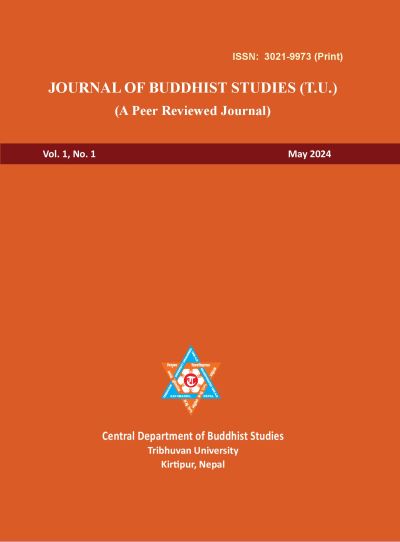Mahāvagga Pali: Vinaya in Formal Gathering of the Sangha
DOI:
https://doi.org/10.3126/jbuddhists.v1i1.75072Keywords:
Vinaya Pitaka, Mahāvagga, Uposatha, Monastry, PabbajjāAbstract
The Ti-Pitaka is a collection of Buddha's teachings. The Abhidharma Pitaka is a philosophical part of Buddhism, whereas the Sutra Pitaka narrates a tale based on Buddha's teachings. Vinaya Pitaka contains instructions on how to live a renunciate lifestyle and follow the rules and regulations of the Buddha. Vinaya is absolutely essential to the continuation and originality of Buddha's teachings. The three subcategories of vinaya are suttavibhanga, khandhaka, and parivra. Suttavibhanga contains serious regulations that monks must abide by, such as Parajika, Pacittiya, Aniyatta, Sanghadisesa, etc. The Conclusions of all Vinaya rules are contained in Parivara, while community-centric rules that are requested by laypeople and on-time demand rules are put in Khandhaka. All of Vinaya was ready to use; it had not been previously presented. It evolved through time. Mahavagga is among the early laws that Buddha started to impose. gradual progress Buddhism grew in popularity over time. Mahavagga contains certain norms that can emerge in Buddhist societies as a result of societal participation. As a result, different places and groups develop their own brand of identical Buddhism. The Vinaya treatment to become a novice and a monk, Vinaya observance and purification, rainy retreat, Pavaran, celebrating Kathina ritual, information regarding robe, medicines and utilities, and how monks can always be together are examples of the sorts of regulations included in this literature. Through, Mahāvagga everyone can benefit from learning about human behavior in ancient South Asia and the design of monks' constitutions.




